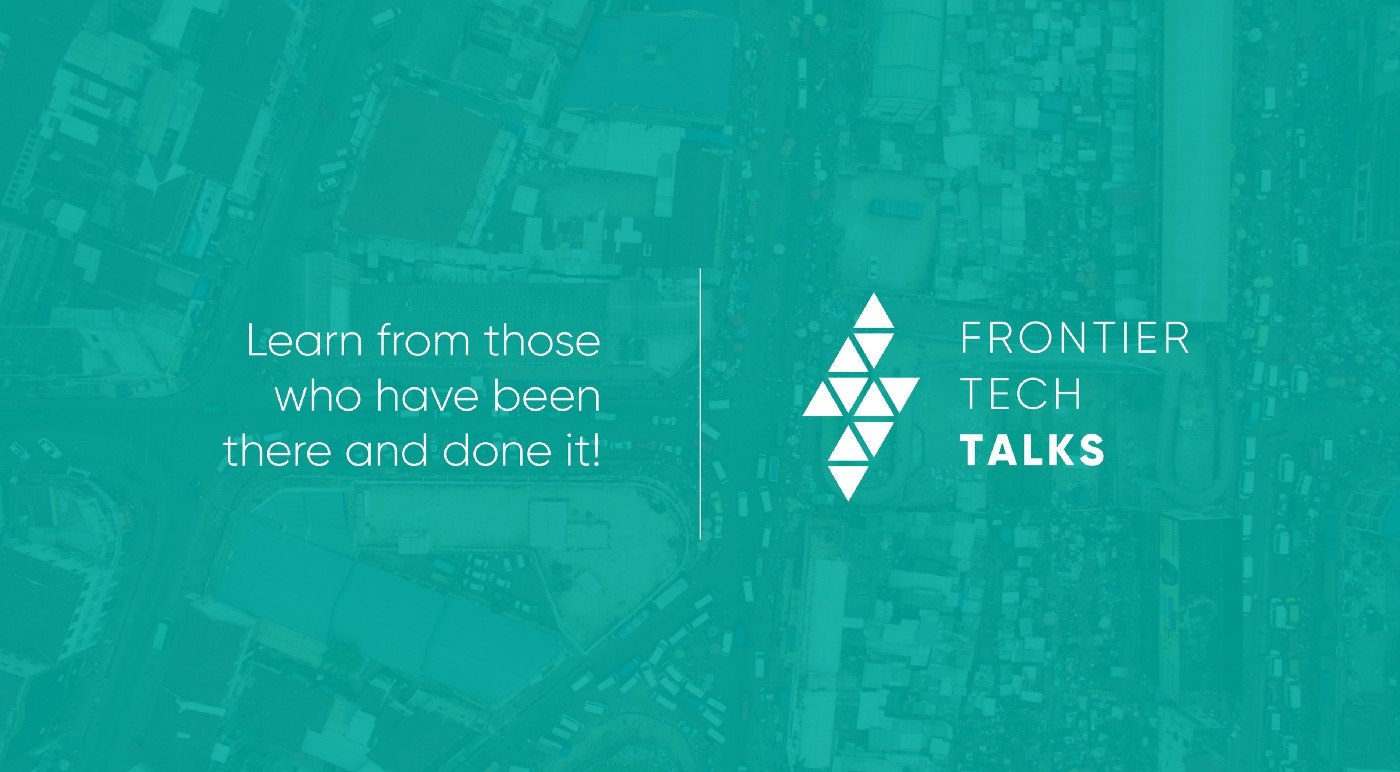Geospatial Data
Geospatial data is information about objects or events relative to their location on or around the earth. From road maps and country borders to the locations of recent earthquakes and areas covered by rainforest - these are all examples of geospatial data.
On this page you’ll learn about geospatial data in five quick sections. Here’s a rundown of what to expect👇🏽
-
We’ll start off with just enough information to help you demystify geospatial data: you’ll get a short introduction and five key facts to dip your toes in!
-
Here we’ll answer five questions you might be asking about geospatial data and define nine buzzwords so that you can start using them in conversation!
-
What can geospatial data actually be used for? The applications are almost limitless. In this section we’ll give you some concrete examples to explore. You’ll see that geospatial data can play key roles in overcoming development challenges!
Once you’ve explored some applications of geospatial data, jump into stories from our pilot portfolio, where they’re testing geospatial data in the field.
-
Evidence is at the heart of the Frontier Tech Hub, and we’ve collated insights from our portfolio and thought leadership from FCDO Pioneers in this section. Dig into our research to look deeper at how geospatial data can be used within FCDO programmes.
-
More resources, however you like to consume. We’ve created a playlist of podcasts, reports, articles and videos to continue your journey. There’s something for everyone.
Factfile
Geospatial data is already affecting your daily life. Do you use google maps to find your next destination or to check public transport availability? Do you check the weather forecast before getting dressed for the day? These are examples of geospatial data in action!
Geospatial data is information relative to geographical location - for example, a map showing the average temperature in different regions of the world. It is also usually linked to time.
Geospatial data describes a broad array of information that can be collected, analysed and implemented through varied approaches and technologies. Geospatial data supports an evidence-based, scientific decision-making, but also an inclusive and holistic approach. It allows multiple different factors to be considered at once. This makes the potential applications of geospatial data to development challenges almost limitless!
Geospatial data can be aided by other frontier technologies: drones can be used to help gather images, remote sensing can provide real-time information, and the Internet of Things can connect objects to share and gather data.
Five key facts about geospatial data
Fact 1: It’s not new!
In the 1800s Charles Picquet first engaged with geospatial data when he created a heat map to help understand the spread of Cholera in Paris.
Fact 2: Google maps was a turning point in the development of geospatial data technology.
In 2005, google maps emerged and made the advantages of geospatial data and geospatial information systems technology available to the masses. We now rely on it for directions, recommendations, and up-to-date traffic information.
Fact 3: Geospatial data plays an essential role in understanding, and tackling, the climate crisis.
The applications of geospatial data are as diverse as the data that can be gathered. It is key to understanding today’s complexs climate crisis and helping to design and monitor solutions on big and small scales. Using data to map palm oil plantations we can learn about biodiversity loss due to agriculture and design conservation practices to preserve habitats and livelihoods.
Fact 4: Geospatial data is also about people, not just earth systems!
Geospatial data can also be sociological. It can help us understand the distribution of red (republican) and blue (democrat) states in the USA or map traffic incidents to help improve road safety.
Fact 5: Geospatial data can be used to predict the future.
Geospatial AI can be used to model future scenarios. For example, if a geospatial AI is provided with enough data about the spread of a particular disease it could learn to predict future transmissions. This could help health professionals to advise the public and keep people healthy.
If you’re completely new to geospatial data, we would recommend taking these three quick steps first:
Watch this two-minute video to get a quick overview of geospatial data today.
Explore this short article introducing the basics and exciting developments in geospatial data.
Questions and Buzzwords
-
There are two main ways to talk about geospatial data:
Static vs dynamic
A static data point is one that doesn’t move - at least short term. For example, a church or the place where an earthquake occurred. Dynamic data follows things on the move like vehicles, diseases or even people.
Vector vs raster
Vector data is when objects or events are symbolised. For example, a cross is placed where a church is located or a coloured line visualises a road. This is classified as structured data because it has been interpreted to create a key of symbols.
Raster data is more complex and usually created from satellite images. Images are taken and organised into a grid where squares can be identified by coordinates. This is often considered raw or unstructured data.
-
The diversity of geospatial data means that the methods of gathering it are also diverse.
Satellite images are a major source of geospatial data, but drones can do a similar job, especially with the help of remote sensors. Equally mobile phone data can provide information about people’s locations. Data can also be gathered from existing maps or by conducting surveys. There’s no one way to gather geospatial data!
-
Analysing geospatial data can help us understand phenomena and predict future occurrences. Maps are helpful to create visual representations of data. Different data sets will often be layered on a map making it easier to spot relationships and patterns in variables than on a spreadsheet of coordinates!
For example, if we wanted to understand what causes hurricanes we might take a map of the world and use GIS technology to layer temperature, wind speed, other weather-related variables, and the locations of hurricane events. This approach may reveal patterns helping us understand why hurricanes occurred. We might then identify and prepare sites where hurricanes are likely to occur in the future.
-
All complex frontier technologies come with risks and challenges. They should be implemented carefully.
In the case of geospatial data, challenges arise due to the data’s complexity and diversity. How do we know which data is relevant? How do we access it? How can we organise it to support interpretation?
Organisations often lack the expertise and IT capacity to cope with large geospatial data files. It can be difficult to analyse geospatial data when you don’t know how, or which data, to integrate. There are also often challenges in formatting and standardising hugely varied data types.
FAQs
This is an example of an interactive geospatial map containing geospatial data about the Amazon region including protected areas and indigenous territories.
Master 9 key buzzwords
Three last things before we move on
📺 An ever-evolving map of everything on Earth
What if we had a map of ... everything? Jack Dangermond, is a visionary behind the geographic information system (GIS) technology. Learn how this "living atlas" and "geospatial nervous system" can help us better understand our changing planet. (5 minute watch)
Podcast episode exploring the first launch of thermal satellite imagery, it’s uses and the challenges associated with it. (40 minute listen)
📚 What is geospatial data and how is it used?
An article explaining briefly the basics of geospatial data and how it can be applied. (short read)
Functionality
What is possible using geospatial data?
Three last things before we move on
📺 The mission to create a searchable database of Earth's surface
What if you could search the surface of the Earth the same way you search the internet? Will Marshall and his team at Planet use the world's largest fleet of satellites to image the entire Earth every day. (6 minute watch)
📚 Geospatial Technology and Information for Development
An article from the World Bank explaining how geospatial data could be essential to help sustainable development and outlining some case examples. (short read)
📚 Top 8 Applications of Geospatial Data in our Lives
Discover this brief article outlining eight different industries where geospatial data can be applied for good! (short read)
Explore stories from the pilot portfolio, testing geospatial data in the field - more coming soon!
Three last things before we move on
📺 Tiny satellites show us the Earth as it changes in near-real-time
Satellite imaging has revolutionized our knowledge of the Earth, with detailed images of nearly every street corner readily available online. Planet Labs' Will Marshall introduces his tiny satellites that, when launched in a cluster, provide high-res images of the entire planet, updated daily. (8 minute watch)
🎧 Catherine Nakalembe - Food in Stores Isn't Enough: Food Security in Africa
Podcast episode interviewing a satellite imagery scientist working to apply the technology to improve food security in Uganda. Discusses the role of satellite imagery alongside her career. (1.5 hour listen)
📚 “Geospatial Data is Still Not Being Used Sufficiently to Improve People’s Lives”
A short article containing an interview with Nadine Almeh exploring geospatial data and GIS technology’s progress in addressing development challenges. (short read)
















